Valves UK
ASCO E290B010 Pressure Operated Valves
ASCO E290B010 Pressure Operated Valves
Couldn't load pickup availability
IN STOCK - SAME DAY DISPATCH
The ASCO E290B010 Pressure Operated Valve is part of the trusted ASCO E290 Series, a range of 2/2 normally closed piston-operated valves designed for precise and reliable control of neutral and aggressive fluids. This model combines robust construction with advanced engineering to deliver dependable performance in high-pressure and demanding process applications.
Key Features:
Type: 2/2 Normally Closed (NC)
Operation: Pressure operated, piston type
Body material: Bronze or stainless steel (depending on specification)
Design: Fluid entry under the valve disc
High flow rate and stable operation
Water hammer prevention for system protection
High-performance stuffing box for leak-free operation
Suitable media: Neutral and corrosive fluids
Ideal for: Process automation, fluid handling, water and chemical control systems
Share
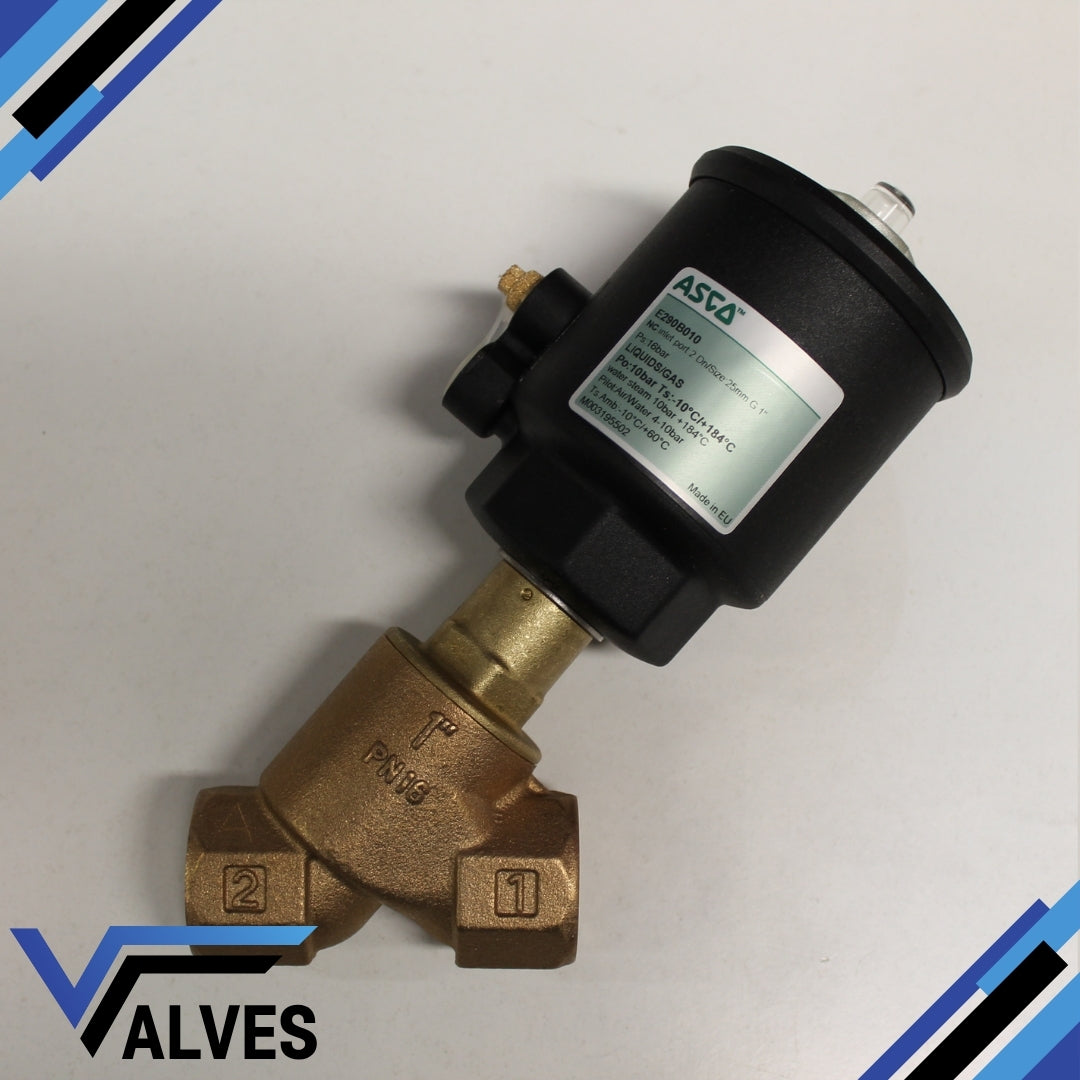
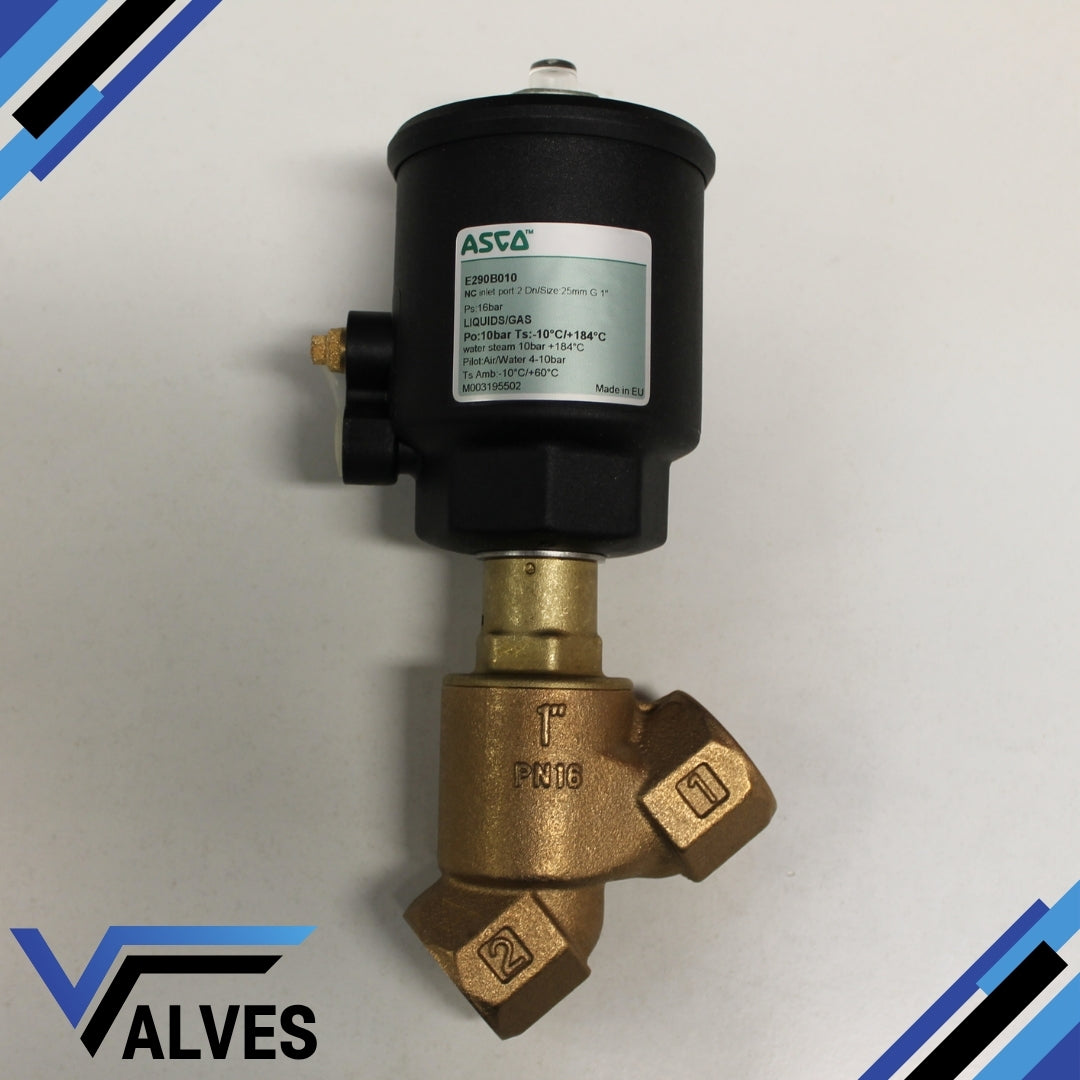
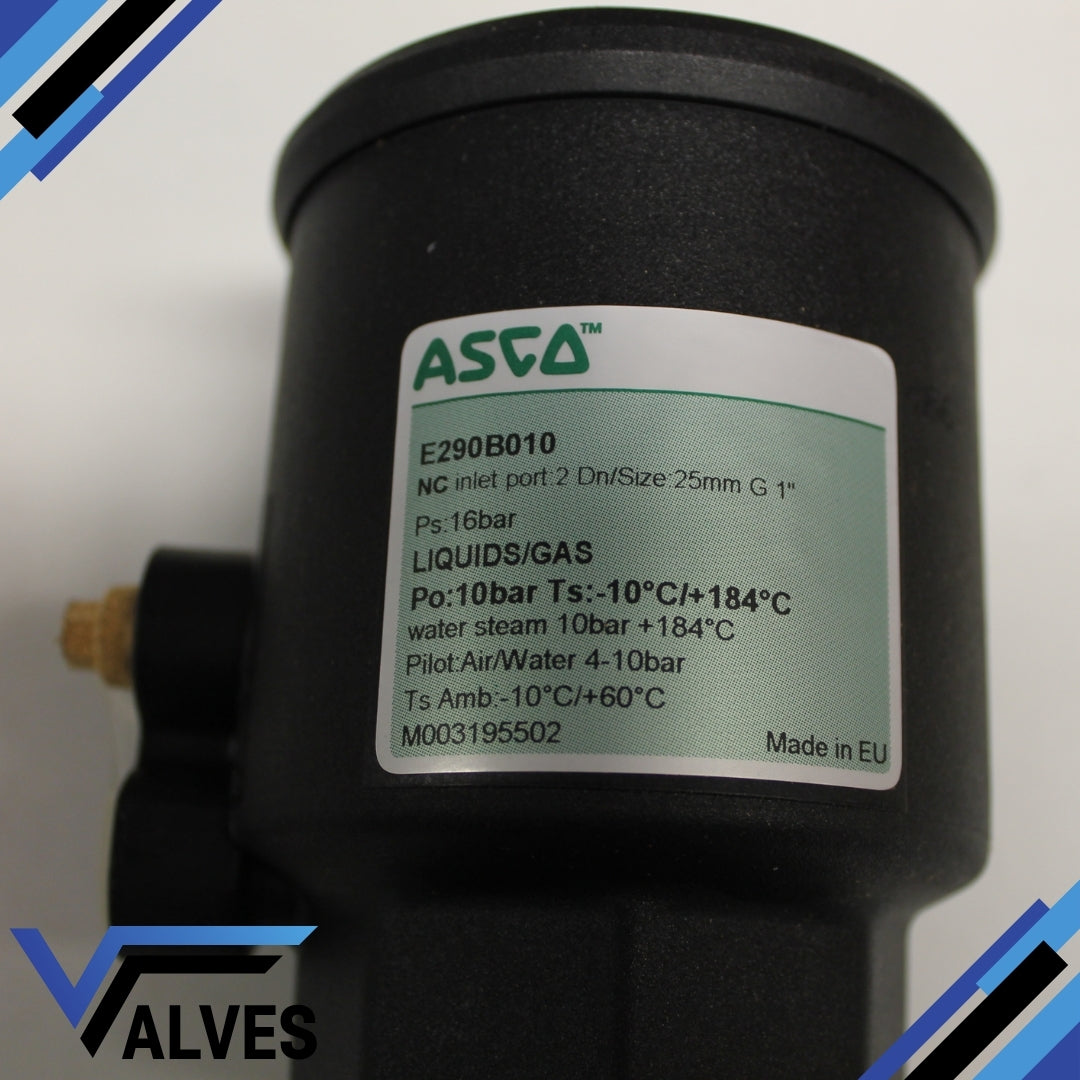
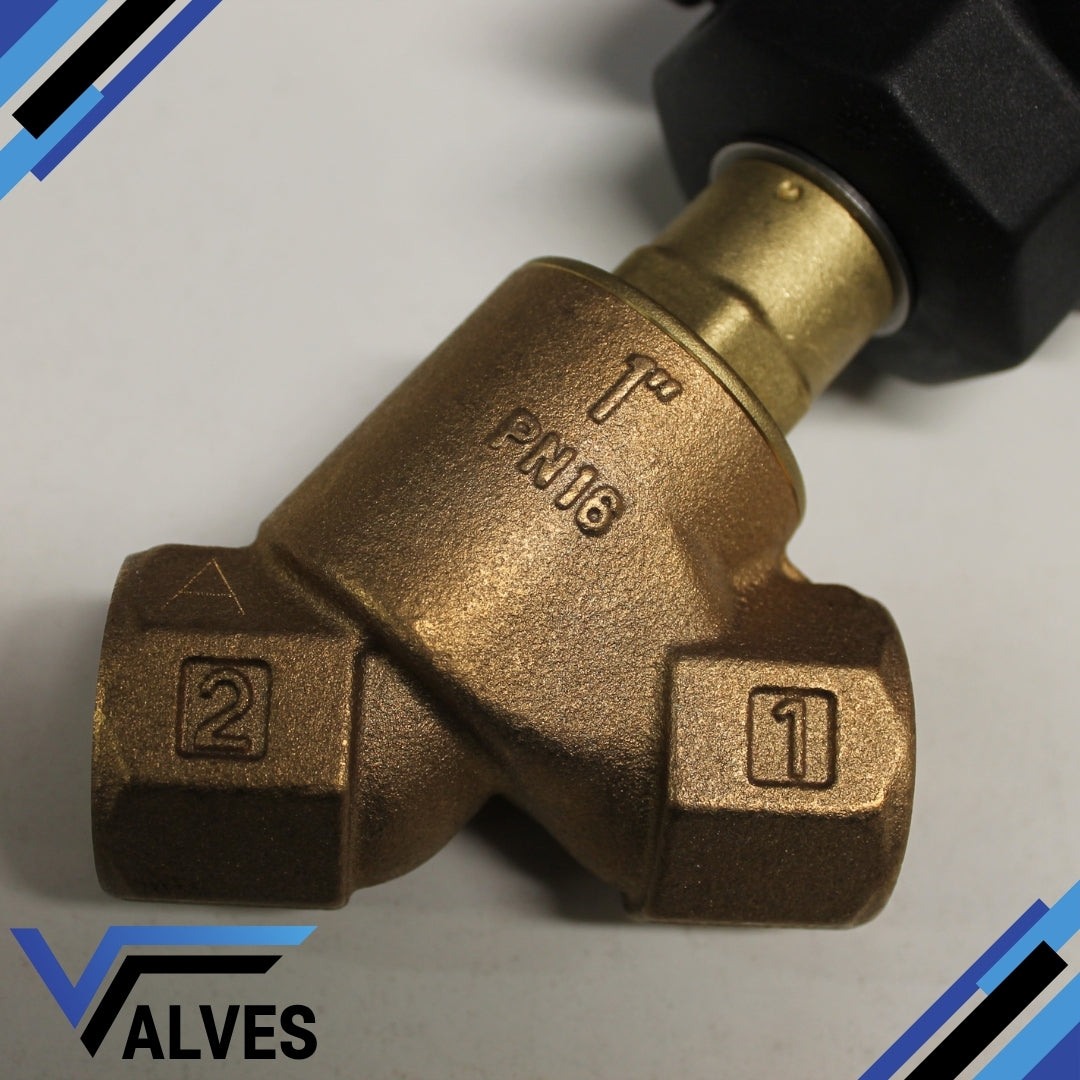
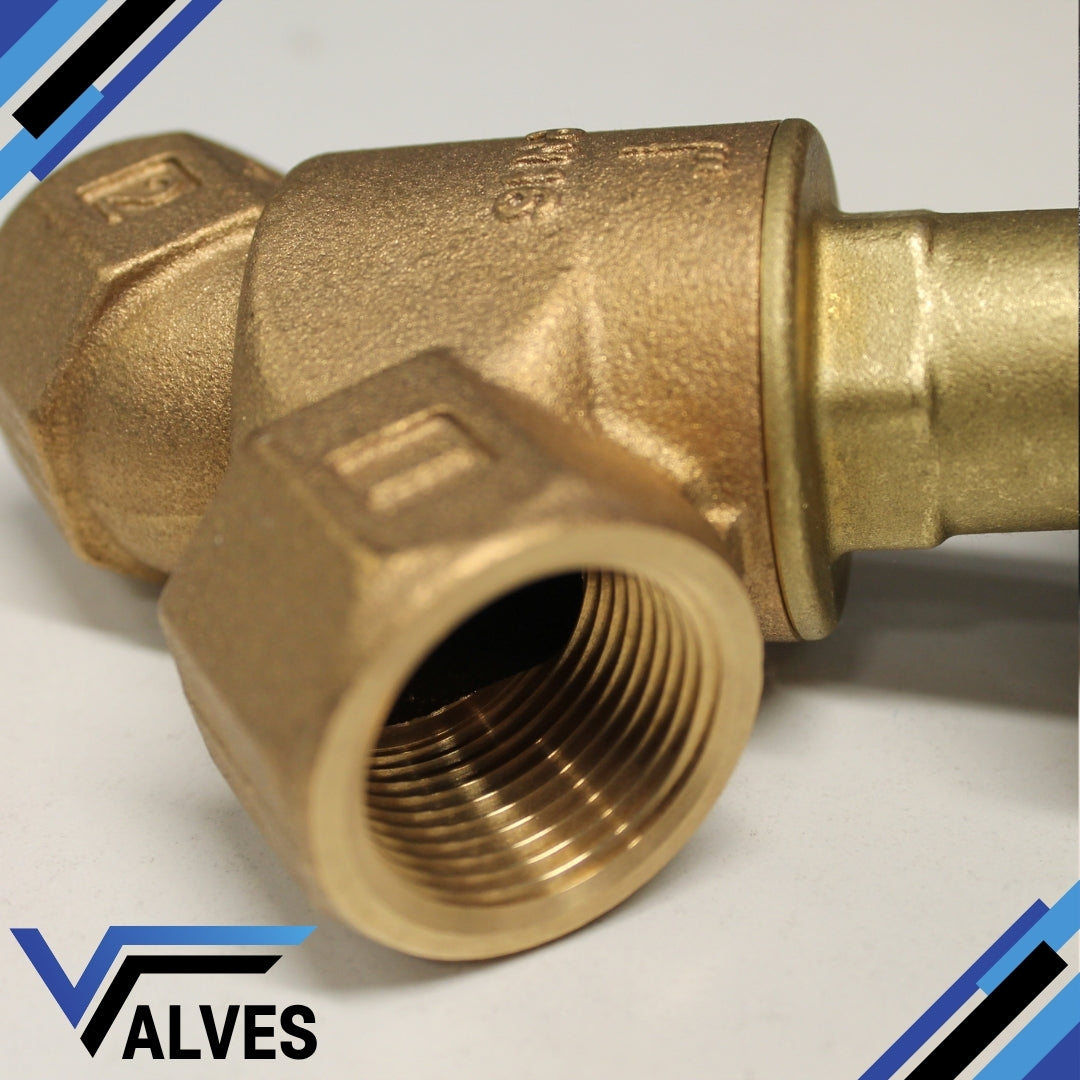
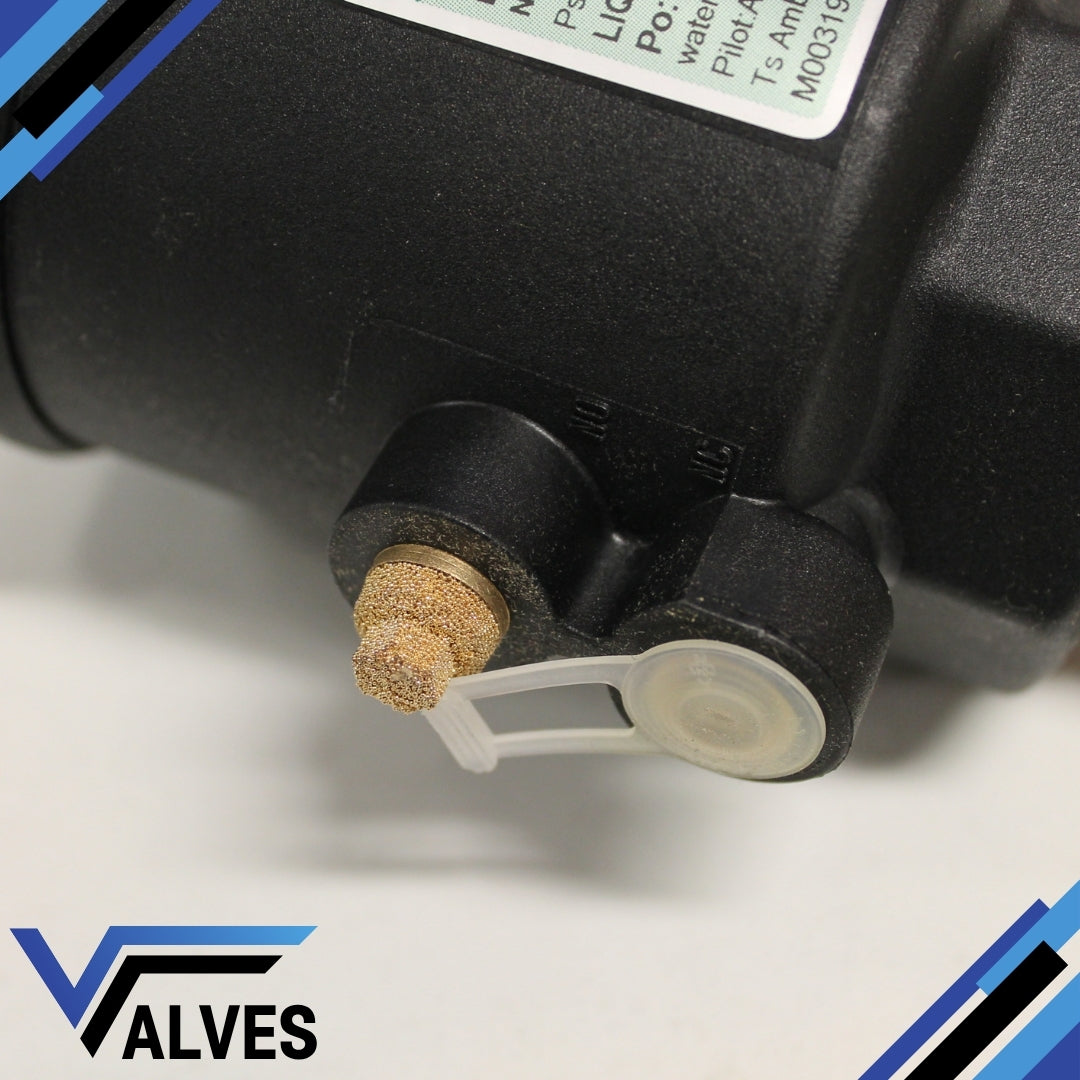
FAQ's
What is the difference between a valve and an actuator?
What types of actuators are available?
The main types of actuators are:
Pneumatic actuators – use compressed air for fast, reliable operation.
Electric actuators – use electrical power for precise control.
Hydraulic actuators – use fluid pressure for high-torque applications.
Each type offers unique advantages depending on the environment, media, and system control needs.
How do I choose the right actuator for my valve?
To select the correct actuator, consider:
Valve type and torque requirement
Power source available (air, electric, or hydraulic)
Operating environment (temperature, humidity, hazardous area)
Control signal type (on/off or modulating)
Matching actuator torque and compatibility with the valve’s ISO mounting ensures reliable performance.
What are the main types of valves used in automation?
The most common valves in automated systems include:
Ball valves – for tight shutoff and quick operation.
Butterfly valves – for larger flow control with compact design.
Globe valves – for precise throttling and flow regulation.
Check valves – to prevent backflow.
Gate valves – for full bore flow isolation.
What’s the difference between a double-acting and spring-return actuator?
Double-acting actuators use air (or power) to both open and close the valve.
Spring-return actuators use air to open (or close) the valve, and a built-in spring to automatically return it to a safe position when power or air is lost — ideal for fail-safe operation.
How often should valves and actuators be serviced?
Regular maintenance intervals depend on operating conditions, but a good rule of thumb is to inspect every 6–12 months.
This includes checking for leaks, lubrication, seal wear, and actuator responsiveness to prevent unexpected downtime.






